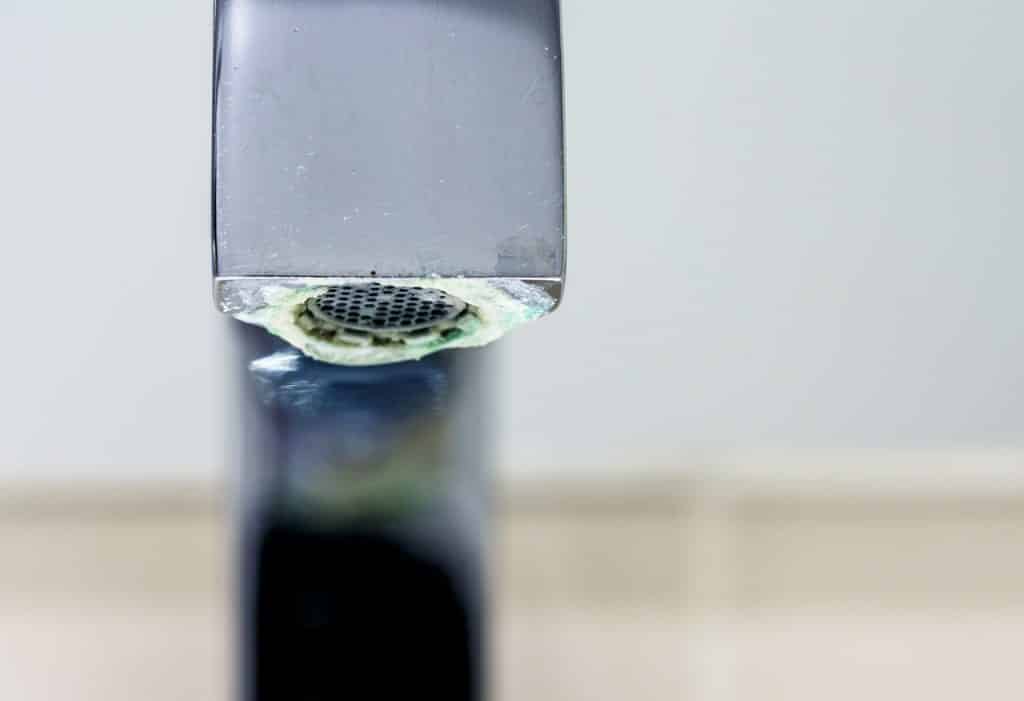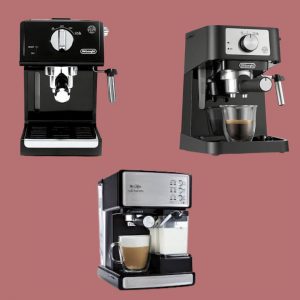
How Much Does Coffee Cost When I Make it at Home?
Coffee, it’s the reason mornings are good and that any work gets done. I will happily fork over $15 and a tip every day to
When you live in an area with hard water, every buying decision for an appliance that comes into contact with water becomes just a bit harder. Even when deciding which coffee maker to get.
You want the coffee maker that makes you the best cup of coffee.
But can it handle hard water?
I struggled with this question myself. I live in an area with extremely hard water, and I needed a new coffee maker.
I did what you did. I did what anyone would do nowadays: I searched online for advice.
But what I found was disappointing. All I got was websites trying to sell me a coffee maker, promising it was able to handle hard water. But no proof. Not even the tiniest bit of information that supported its claim.

I went all out and did the research and talked to the experts. I even called my water company to find out what they had to say about the matter.
In the end, what I found out was disappointing and reassuring at the same time:
The uncomfortable truth is: all good quality coffee makers can handle hard water. And at the same time, none of them can.
Confused? Yeah, me too.
Let me explain:
Hard water is still water. So any coffee machine will operate as it would in an area with soft water. In the beginning that is. Hard water will build up scale a lot faster than soft water, so the same coffee maker will start to have problems in a hard water area sooner than it would in a soft water area.
So it comes down to the general quality of the coffee maker.
A cheap coffee maker with bad quality components will break down sooner than a good quality coffee maker with the best quality components.
Even in an area with soft water.
But in an area with hard water, it will break down even sooner. Hard water decreases the lifespan of your coffee maker in general.
The only way to mitigate the destructive effects of hard water on your coffee maker entirely is to use bottled water for making coffee. While this might be good for the delicate-paletted specialty coffee aficionado, it is not for everyone.
Using bottled water for making coffee is costly and a hassle (you have to make sure you have a steady supply).
But, as said, the only real way for hard water to stop destroying your coffee maker is to not use it.
Your second option is to descale your coffee maker more often. Descaling involves pouring a descaling liquid into your machine and run a brew cycle, followed by a few brew cycles with fresh water to remove the cleaning agent from the machine. The descaling liquid removes the mineral build-up in the machine. A good descaling liquid used every couple of weeks (depending on how much you use your coffee maker) will keep your coffee maker squeaky clean.
Any coffee maker should be descaled regularly. But a coffee maker that is used in a hard water area should be descaled far more often. More on that later.
My message is: don’t believe people that tell you there are hard water-resistant coffee makers. There are none. Buy a good quality machine and either use bottled water or descale it every couple of weeks.
So, descaling is something you should do with every coffee maker in every area, whether your water is hard or not so hard. But, as said, in hard water areas, you should do it far more often. But how often?
I took a look at the user manuals of the most popular drip coffee maker brands, and what I found shocked me (again). Their recommendations are all over the place. It is like they have no idea. Take a look at the table below.
| Brand | Primary recomendation | Secondary recomentation |
|---|---|---|
| AmazonBasics | every 6-8 weeks (hard water area) | See note below table |
| Cuisinart | twice a year | - |
| Hamilton Beach | monthly | - |
| Keurig | every 3-6 months | - |
| Krups | every 2-4- brew cycles | monthly |
| Mr. Coffee | monthly | - |
| Nespresso | every 600 cups | every six months |
| Technivorm (Moccamaster) | every 100 brew cycles | - |
Note on AmazonBasics: to my surprise, I found that AmazonBasics has an extremely affordable drip coffee maker. This coffee maker gets very positive reviews on Amazon. It is a simple coffee maker, but what really struck me is that AmazonBasics is the only brand that gives water type-specific recommendations for when you need to descale the coffee maker.
As you can see from the table below, in a hard water area, you need to descale every 6 to 8 weeks. In a medium and soft water area, you have to descale every 2 to 3 months and every six months, respectively.
This recommendation illustrated how much more you need to descale in a hard water area compared to a soft water area. Some quick math: in a soft water area, you descale 2 times a year. The 6 to 8 weeks recommendation translates to more between 6.5 and 8.7 times each year. This means that you need to descale a coffee maker in a hard water area roughly 3 to 4 times as often as in a soft water area.
Now the AmazonBasics coffee maker costs around $20. If I would own a higher quality, and thus more expensive coffee maker, I would want to be on the safe side and descale it every 6 weeks. If I were a heavy user (multiple pots each day), I would descale once a month.
I know this sounds counterintuitive. A more expensive coffee maker would be made with higher quality components, which would be more resilient to scale. Right?
While that is true, if I had paid $100 to $200 for a coffee maker, I would want to keep it in the best condition I can.
So there you have it.
My recommendation: descale once a month.
We have established that descaling your coffee maker every month (if you live in a hard water area) is recommended. Next is the question of how to descale.
To descale your coffee maker, you have to run a brew cycle with a descaling solution added to the water. This liquid breaks down mineral deposits and limescale so they can be washed out of the machine. You stop the brew cycle halfway and let the descaler/water sit in the machine for about an hour to dissolve any stubborn mineral build-up.
There are two types of descaling solution. There are commercial descaling solutions, and there is simple white vinegar. The acidic properties of white vinegar make it very suitable for dissolving and removing mineral build-up and limescale. The commercial descaling solutions are more powerful (or at least they claim to be) and odorless (again, a claim, but their scent is usually much less strong than vinegar).
Which one you use is entirely up to you. Both work great. Personally, I don’t see a reason not to simply use white vinegar. WAY cheaper. And if you descale regularly, there isn’t really a difference.
The one instance where I would recommend a commercial descaling solution is when your coffee maker is in very bad shape. Maybe even clogged up from all the mineral deposits and limescale. I find that commercial solutions work just a bit faster.
But for your regular descaling routine (remember: once a month!), white vinegar is fine.
Step 1: clean your coffee maker.
Remove the basket and the carafe and wash it with warm soapy water. Rinse thoroughly and dry. Clean the outside of the coffee maker with a damp cloth. If you have some water spots (limescale) or coffee stains that cannot be removed with soap and water only, try applying a bit of vinegar.
This step is really something you should do every week. A clean coffee machine makes better coffee. There is no contamination of old coffee or stale water.
Step 2: add water and white vinegar or descaling solution to the reservoir.
Next is to add the water and your preferred cleaning solution to the reservoir. If you are using white vinegar: add water and vinegar in a 1:1 ratio. That is half vinegar, half water. If you are using a commercial descaling solution: follow the instruction on the bottle.
Step 3: run the brew cycle.
Turn on the coffee maker to start the brew cycle. When the reservoir is half empty, shut down the machine. Let the solution sit in the machine for about an hour. Then turn it back on and complete the brew cycle.
Step 4: run a few brew cycles to clear the cleaning solution.
After the first brew cycle has finished, discard the water/vinegar or descaling solution. Rinse the carafe and fill it with fresh cold water. Add this to the reservoir and run a full brew cycle. Repeat this process 3-4 times to remove any smell or aftertaste.
That’s it!
After reading all this, you might be tempted by a manufacturer (or coffee blogger) that advertises with a ‘self-cleaning’ coffee maker. And you would be forgiven. But also mistaken. The ‘self-cleaning’ isn’t as automatic as you might wish to believe.
Many manufacturers offer coffee makers with a so-called self-cleaning option. Cuisinart, Keurig, Ninja, and many more have coffee makers with this feature. And I don’t want to say it isn’t a useful feature. I just want to make clear what it means. At best, the self-cleaning feature is two things. First, it is an indicator that shows when your coffee maker needs to be descaled. Second, it is a program on the coffee maker that runs water (or vinegar, or a descaling solution) through the machine to clean it.
The problem here is that while an indicator light is useful as a reminder to clean your coffee maker, it is not self-cleaning. There are coffee makers that are advertised as self-cleaning that only have said indicator light.
The problem with a cleaning program, whether it runs automatically or needs to be turned on, doesn’t matter, is that is doesn’t solve your hard water problems. If the program only uses water, it will clean out coffee residue or milk, but not mineral deposits or limescale. You would have to add vinegar or a descaling solution to the reservoir for that. And that makes is not self-cleaning.
So, don’t be misguided and save yourself from disappointment.
MonsieurCoffee.com is a participant in the Amazon Services LLC Associates Program, an affiliate advertising program designed to provide a means for sites to earn advertising fees by advertising and linking to Amazon.com. We earn small commissions on purchase made through links on this site, at no extra costs to you.

Coffee, it’s the reason mornings are good and that any work gets done. I will happily fork over $15 and a tip every day to

I used to be quite confused about single origin, single estate, single farm, and specialty or micro-lot coffee. I see these words everywhere in coffee

Making espresso at home doesn’t have to break the bank. This list of the best espresso machines under $200 will give you the best options to make homemade espresso.

The Hario V60 is one of the great tools to make manual pour over coffee. Any coffee enthusiast should, in my opinion, dive into pour over coffee